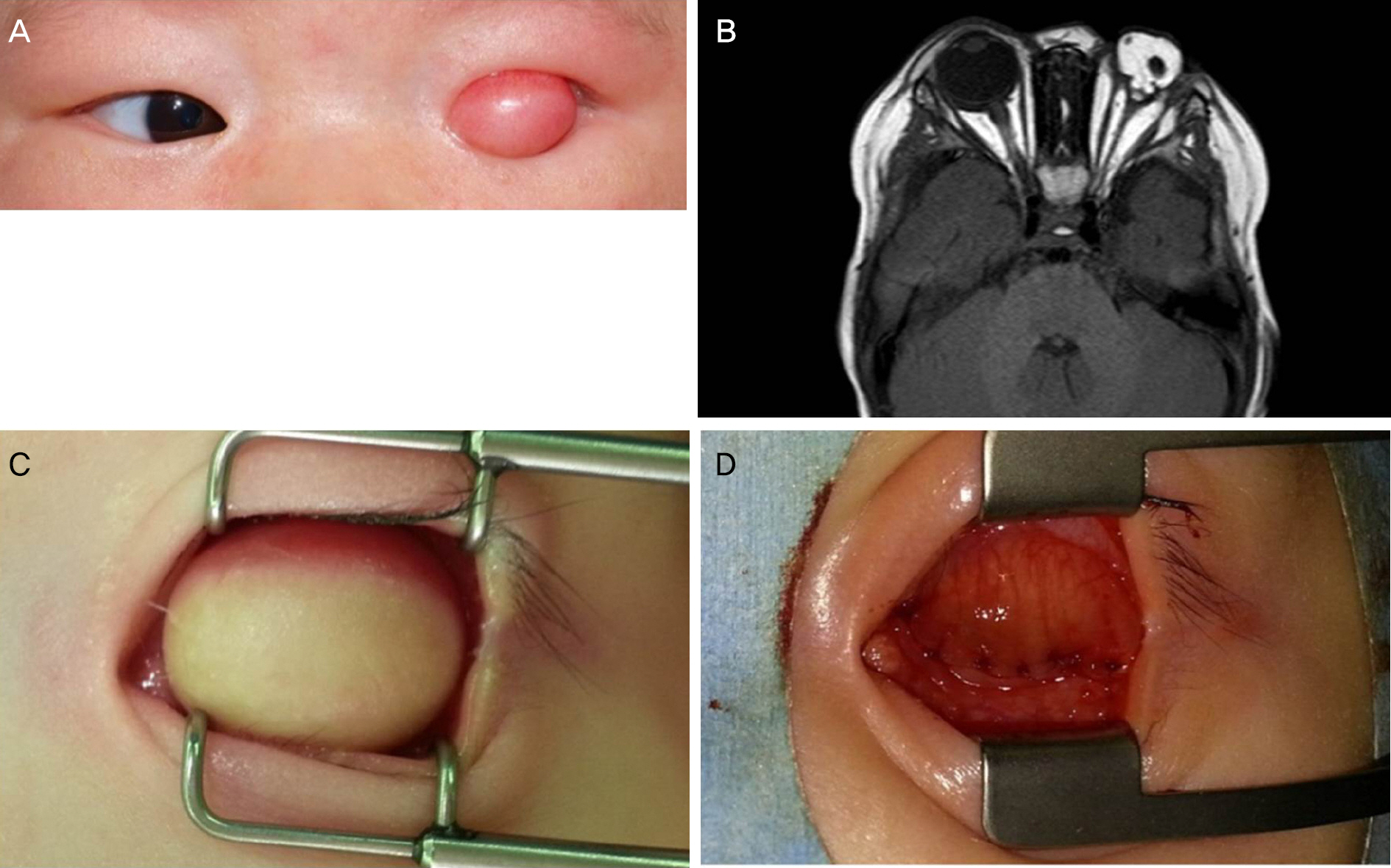J Korean Ophthalmol Soc.
2017 Jan;58(1):79-82. 10.3341/jkos.2017.58.1.79.
A Case of Extensive Epibulbar Choristoma Associated with Microphthalmos
- Affiliations
-
- 1Department of Ophthalmology, Seoul National University Hospital, Seoul, Korea. khwarg@snu.ac.kr
- 2Department of Ophthalmology, Seoul National University College of Medicine, Seoul, Korea.
- 3Department of Ophthalmology, Seoul National University Bundang Hospital, Seongnam, Korea.
- 4Department of Ophthalmology, Seoul Metropolitan Government-Seoul National University Boramae Medical Center, Seoul, Korea.
- KMID: 2367846
- DOI: http://doi.org/10.3341/jkos.2017.58.1.79
Abstract
- PURPOSE
Choristomas represent congenital overgrowth of normal tissues in an abnormal location. The simultaneous presence of epibulbar choristoma and microphthalmos has rarely been reported. The authors report a case of extensive epibulbar choristoma associated with microphthalmos.
CASE SUMMARY
A 9-day-old boy with the left eyeball absent from birth was referred to our clinic. A large cornea-like structure covered by keratinized membrane was observed inside the eyelid aperture, therefore buphthalmos or corneal staphyloma with microphthalmos was presumed. At the age of 2 months, a large mass of central conjunctival sac protruded through the left eyelid aperture. Manual reduction could not return the tissue to its original site and the mass immediately protruded again. At the age of 9 months, orbital magnetic resonance imaging showed the small presumed ocular tissue behind the large mass of fat signal in the central anterior orbit, therefore, extensive epibulbar choristoma associated with microphthalmos was diagnosed. At 12 months of age, partial excision of the protruding portion of the mass was performed. Based on pathologic examination, the mass was determined to be a choristoma and cosmetically acceptable appearance with prosthesis was maintained for 10 months after the surgery.
CONCLUSIONS
Because there is no vision in extensive choristoma associated with microphthalmos, the treatment goal is cosmetic improvement. Conjunctivoplasty following partial mass excision for prosthesis wearing is a good treatment option.
Keyword
MeSH Terms
Figure
Reference
-
References
1. Mansour AM, Barber JC, Reinecke RD, Wang FM. Ocular choristomas. Surv Ophthalmol. 1961; 66:111–24.
Article2. Hou Z, Korn BS, Ding J, Li D. Management of extensive epibulbar choristoma associated with microphthalmos: a rare clinical entity. JAMA Ophthalmol. 1961; 66:111–24.3. Schulze RR. Limbal dermoid tumor with intraocular extension. Arch Ophthalmol. 1961; 66:111–24.
Article4. Chawla B, Chauhan K, Kashyap S. Mature orbital teratoma with an ectopic tooth and primary anophthalmos. Orbit. 1961; 66:111–24.
Article5. Casey RJ, Garner A. Epibulbar choristoma and microphthalmia: a report of two cases. Br J Ophthalmol. 1961; 66:111–24.
Article6. Murata T, Ishibashi T, Ohnishi Y, Inomata H. Corneal choristoma with microphthalmos. Arch Ophthalmol. 1961; 66:111–24.
Article7. Huang TY, Tsai YJ, Tan HY, Ma L. Managing epibulbar chori-stoma with microphthalmos. J Pediatr Ophthalmol Strabismus. 1961; 66:111–24.
Article




